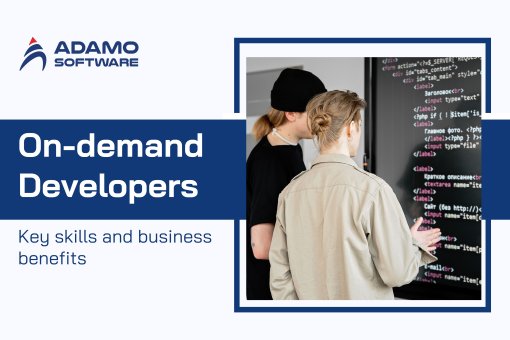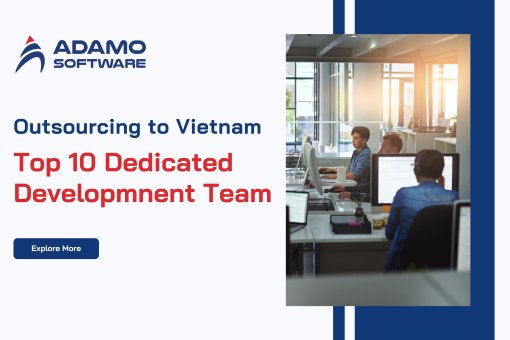IT Staff Augmentation Services: Costs breakdown for 2026

In the ever-developing world of technology, it becomes a test for businesses to change with the pace and still deliver quality. Recruitment, as a result, becomes important to help companies maintain their places in a competitive business environment.
IT staff augmentation services have become a great option as they help organizations quickly staff projects while successfully integrating professionals into their teams. Essentially, this approach caters to short-term training needs and allows the project to hire human resources as may be required.
This article will highlight the costs associated with IT staff augmentation services so you can decide on the right option for your business.
I. Factors that affect IT staff augmentation services cost
It’s important to have a list of all factors involved when determining the IT staff augmentation costs and management. These can be software engineers’ skills, project requirements, market trends, or how to choose and manage the vendor.
By adopting a best-practiced system in assessing costs, businesses can optimize the value of IT staff augmentation services. This helps to maximize expenditure, minimize risks, and promote balanced growth in the face of stiff market competition and a dynamic environment.

1. Skillset requirements
From a skills point of view, augmenting IT staff requires customized skills for each project instead of a one-size-fits-all approach.
- Specific technologies: The technology field is huge. It can be anything from taking advantage of advanced techs like AI and ML to using mainstream frameworks such as Java or .NET. Because of how diverse they are, there is no off-the-shelf hire. In addition, demand and competition are high because specialized software professionals are sometimes hard to come by. Since this is emerging tech, companies will always compete for staff augmentation with skilled teams to drive innovation and real business impact. Hence, it will mean higher expenses.
- Experience levels: Level of experience matters in IT staff augmentation regarding project success and cost. Senior engineers are knowledgeable, in-depth, and strategic at solving problems. Therefore, their rates would be higher. On the flip side, junior-tier professionals can charge lower costs but might need more time and training. It’s that need that can cause hidden costs and decreased productivity. As a result, IT staff augmentation services must be balanced with experience and cost to fit project objectives and business targets.
2. Project duration
IT staff augmentation costs can get more complicated as the project runs longer, affecting everything from scalability and resource use to budget. The initial costs for short-term projects or ad hoc tasks may be low. However, these costs can quickly add up per hour or resource due to administrative overhead, setup costs, and fragmentation of resources.
On the contrary, long-term engagements can lead to cost efficiency. Ongoing collaboration on these projects ensures better negotiable rates, optimally used resources, and increased team consistency. Hence, project duration must align with goals to maximize cost and build team dynamics for IT staff augmentation services.
3. Location of resources
The geographical location of IT resources influences costs. This is caused by several factors, like regional differences in the labor market, standards of living, and exchange rates. Offshore destinations like India, Ukraine, and the Philippines have potential cost savings benefits compared to onshore destinations, but with their associated challenges.
For instance, project outcomes can be affected by communication gaps, cultural differences, and variance in educational quality. Hence, being near the centers for skilled professionals and appropriate local universities or tech institutions is important. Geopolitical and regulatory factors can also create an additional risk, so careful planning is important.
The nearshoring of resources closer geographically and culturally has the perfect balance for cost-effective IT staff augmentation services.
4. Demand and supply dynamics
IT staff augmentation costs highly depend on demand and supply dynamics, industry trends, and market shifts. Cybersecurity, data science, and cloud computing are examples of skill areas with demand and talent shortages. This means that these professionals are in greater competition, pushing up costs and necessitating strategic sourcing.
For organizations, a talent surplus may occur during economic downturns or when there are oversaturated skill areas. When this happens, the outsourcing rate tends to be lower with lots of alternatives, which helps cut down costs and risks.
Therefore, staying aware of demand-supply changes and planning will help companies adapt and make cost-effective IT staff augmentation decisions.
5. Quality assurance and testing
Project success and long-term viability depend on quality assurance. Quality should never be cut to save a few bucks because it leads to higher maintenance costs, limited scalability, and low stakeholder satisfaction. This prevents them having to bear risks and incurring future costs.
Putting all the resources into the right place altogether helps keep defects and rework, often contributing to budget overruns at bay. This means focusing on comprehensive testing, skilled testing professionals, and great tools. Organizations that place a priority on quality can equip themselves with the foundation for continuous improvements and operational excellence. This is essential for sustained project success.
At a time like this, choosing those who can provide quality IT staff augmentation services is essential to ensure quality in everything you do.
6. Vendor selection and management
To save IT staff augmentation costs and ensure projects succeed, choose the right vendor. Vendors should be judged for more than cost; technical experience, ethical standards, contract terms and resource allocation should be considered. Here are several factors impacting costs that might not be immediately obvious:
- Average CV acceptance rate: This metric measures how many vendor candidates are screened. It involves calculating the proportion of the candidates that were accepted over the number of candidates that the vendor reviewed. If the acceptance rate is low, evaluations could get stricter, evaluation hours could increase, and you’ll pay more.
- Average team turnover rate: Knowing turnover gives you a look at staffing stability and finances. Understanding the number of employee departures from a vendor’s team enables organizations to foresee this potential disruption. This increases the costs associated with IT staff augmentation because of high turnover.
- Hiring time: The selection expenses come from reviewing each CV, making time and the cost of doing this extra. Hence, monitoring the number of hours devoted per candidate and the cost per evaluation hour will significantly help cut hiring overheads.
- Onboarding duration: You also need to calculate onboarding costs. Generally, it does take a while for the new team members to get to the point where they’re 100% productive. So, measuring onboarding time as a percentage of team cost helps organizations to better estimate the financial impact on timelines and budgets.
- Offered squad size: To be aligned with business goals, it is important to understand the vendor’s resource allocation. Some vendors may suggest a smaller team with less experience, while others might suggest a larger and cheaper team. This model needs to be evaluated there to, for example, confirm it meets the project needs without sacrificing productivity or quality. A well-balanced evaluation of the cost against expertise is where IT staff augmentation services are effectively balanced for value and performance.
To assess a vendor’s resource allocation, follow these steps:
- Request detailed proposals: Ask vendors for proposals outlining team composition, roles, and experience levels to gain insight into their approach.
- Clarify project requirements: You need to communicate who needs to participate, their skill sets, their level of expertise, and their timelines to the vendor. In this way, they’ll understand what they should be delivering.
- Seek clarifications: If the proposal favors junior roles, inquire about the reasoning. Find out how this team composition satisfies project requirements.
- Highlight quality and security: Get the assurance the vendor has created regarding the quality assurance and security standards for the project you expect.
- Encourage open dialogue: Discuss alternate resource strategies that better suit your budget and project goals and how to promote open communication for those ideas. Engage vendors to share the insights and suggestions they’ve gained from experience.
- Negotiate collaboratively: Go about negotiating in a collaborative approach. Adjustments should be made to team composition, pricing models, or performance incentives to maintain quality even at optimal cost.
- Document agreements: When each side comes up with a mutually beneficial strategy for the resource, document all such terms in the contract. This makes things clear and easier to refer to later in the project.
Also read: What is IT staff augmentation: A comprehensive guide for starters
II. Estimate IT staff augmentation based on location
1. South America/LATAM
Due to a broad range of skilled software developers, Latin America provides substantial cost advantages to IT staff augmentation. Development hourly rates vary from $25 to $60 per hour in Brazil, Argentina, and Mexico. It also has great time zone compatibility with North American companies to allow for seamless real-time collaboration.
2. Central / Eastern Europe
It is also common for developer hourly rates to be competitive in Eastern Europe, especially in Ukraine, Poland, and Romania. In these places, the rates can be as low as $25 to as high as $70. To contract in this region, though, businesses must be aware of the ‘pseudo’ cultural and language differences. Failing to take this difference into account can cause many communication and workflow challenges to the project.
3. Asia / Pacific Region
IT staff augmentation costs in Asia are the lowest in the world. This region has countries with large talent pools, such as India, China, and Vietnam. Developer rates in this region range from $15 to $65 per hour. However, geographic and time zone differences and communication difficulties remain challenging. Additionally, some locations, such as China, are increasingly considered high-risk for IT investments. As a result, many companies now prefer friendshoring strategies in safer regions.
III. The Comprehensive Budget Breakdown Table for IT Staff Augmentation
Unlike traditional hiring, IT staff augmentation services help reduce costs without compromising flexibility. Traditional hiring has high expenses for the office space as well as benefits and recruitment. On the other hand, IT staff augmentation services eliminate all the costs associated with such work. These professionals work remotely and do not need extensive onboarding. In addition, the provider also has their equipment, and therefore, the cost of equipment for the project would be lower.
Additionally, IT staff augmentation services help companies avoid these complexities of local tax laws and thus reduce expenses to the maximum extent possible. Traditional hiring is a long-term commitment, whereas IT staff augmentation is project-based engagement and hence, is more flexible. With IT staff augmentation services, businesses that require scalability can quickly adapt, while traditional hiring with large amounts of scalability charges is also difficult.
To get an overview of the budget breakdown comparison, please refer to the table below:
| Cost Element | Traditional Hiring | IT Staff Augmentation Services |
| Employee Benefits | High: Offers extensive employee perks and benefits | None: Handled by the service provider |
| Tax Implications | High: Involves navigating complex regional tax rules | Low/None: Often more favorable tax considerations |
| Workspace Costs | High: Needs physical office space and infrastructure | None: Professionals can opt for remote work |
| Hiring Expenses | High: Recruitment is expensive and time-intensive | Low: Streamlined, flexible hiring options |
| Training Expenses | High: Requires thorough training for new hires | Low/Varies: Professionals often come pre-trained |
| Equipment Costs | High: New devices or tools for every employee | Low/None: Professionals often already have their tools |
| Workforce Flexibility | Low: Limited ability to quickly adjust team size | High: Easy to scale workforce up or down as needed |
| Scalability | Limited: Difficulties in scaling workforce up or down | High: Quick scalability for project needs |
| Commitment Duration | Required: Typically involves long-term employment contracts | Not Required: Flexible, project-based engagements |
IV. Additional costs in IT staff augmentation services

1. Overhead costs
Overhead costs are the indirect expenses incurred in supporting the primary functions of IT staff augmentation services. They are generally not directly attributable to particular projects or tasks.
- Recruitment: IT staff augmentation is a very expensive overhead in recruitment. It covers the processes of CV reviews, screening, interviewing and hiring. For example, costs are calculated based on the number of hires, how much time each evaluation takes, the CV acceptance rate and the turnover rate. It is essentially just a representation of time and push into the corporate group.
- Onboarding: Onboarding costs in IT staff augmentation services include expenses for integrating new team members, such as recruitment, training, orientation, and setup of necessary tools. Project milestones can be delayed by the time spent onboarding by the existing team members, leading to a rise in productivity, too. These delays also create opportunity costs for that source of revenue. Evaluating turnover rates in IT staff augmentation services can help predict team stability and control onboarding expenses.
- Training and development: IT staff augmentation services costs come with training and development. It’s especially true for investments that organizations sometimes make to upskill external team members to meet project needs and standards. Training programs may include technical skill development, compliance training, domain-specific knowledge, and soft skills. These tailored programs ensure that the IT staff augmentation services you get are valued by providing the resources and skills needed for the project.
- Infrastructure and equipment: In the case of IT staff augmentation services, there are tangible expenses, like infrastructure and equipment costs. That’s because organizations must invite external resources to use necessary hardware, software and secure infrastructure. It includes acquiring and sustaining computers, development devices, project management software, and cybersecurity techniques. Investments in data protection and compliance controls are critical to safeguard sensitive information when using IT staff augmentation services. This also helps to mitigate risks associated with external access.
2. Time to market
When evaluating IT staff augmentation services, consider the opportunity costs saved by accelerating your time to market:
- Time delays: The traditional hiring process is arduous. The process involves posting jobs, reviewing resumes, interviewing and negotiating the offer, which can take weeks or months before the project starts. IT staff augmentation services immediately provide you with a professional on board your team and can help accelerate market time.
- Opportunity cost: Lost days to prolonged hiring processes can cost a company revenue or a reduced competitive edge. The IT staff augmentation services give a quick entryway to the groups of specialists so you can utilize available opportunities without any slip-ups.
- Administrative costs: Administrative work, such as paperwork, background checks, payroll and benefits setup, is required for standard hiring. Of course, dealing with larger in-house teams also comes with additional HR demands, such as performance reviews and employee engagement. IT staff augmentation services skill the provider to handle these tedious tasks, so you can concentrate on your company’s primary object targets.
- Onboarding time: New hire onboarding can take weeks or even months to get to know company processes, culture, and project details. This decreases productivity until they’ve become productive themselves. IT staff augmentation services work around this and deliver experienced professionals who can hit the ground running from day one. Ultimately, it helps reduce onboarding time and boost productivity.
3. Management Fee
IT staff augmentation services can include hiring project managers to oversee software development, monitor performance and augment the in-house team with the newly hired people. This will cost something called a management fee. A strong management structure supports an efficient workflow, risk reduction and maximization of resource utilization, and the management fee is very valuable.
Services typically covered by the management fee include:
- Software development oversight: Checking up on projects so that they don’t fall behind track or fall short of objectives.
- Risk mitigation: Looking for potential risks so they can be resolved before busy seasons.
- Performance monitoring: Tracking progress and evaluating the effectiveness of project activities.
- Integrating augmented resources: Integrating external talent into the existing internal team.
- Strategic planning: Setting project goals to fit the broader organizational objective.
- Coordination efforts: Communication and collaboration of all stakeholders.
- Provision of project management tools and resources: Delivering software licenses and tools useful for effective project management.
- Continuous improvement initiatives: Change processes to get better outcomes.
- Expertise in software development methodologies: Applying industry best practices concerning quality and efficiency.
- Adherence to project timelines and budgets: Solving the issue of completing the projects on time and budget.
V. Global comparisons of IT Staff Augmentation prices
When considering IT staff augmentation services, it is useful to consider the difference between regions and developer types within cost. Here’s a breakdown of the average or median hourly rates:
- Latin America: Front end and back-end developers normally make the same hourly rate of $28 to $55 per hour. The rate for a full stack developer would be $32 – $57 per hour, and mobile developer would be a little lower ($28 – $50/hour).
- Eastern Europe: This region has the highest rate of the three mentioned here. Its hourly rates for front-end, back-end, and mobile developers are from $32 to $60. For a full stack developer, as it should, the rate also varies between $36 and $66 per hour.
- Asia: This would be the most cost-saving choice as the rate here is much lower than in the other two regions. You can hire a front-end developer or a full-stack developer in Asia for as low as $20/hour. Of course, depending on your specific requirements and the developers’ expertise, this rate can go up to $58 – $63/hour. Back-end and mobile developers can also be hired at a starting low rate of $17/hr and rising to as much as $60/hr.
Whether which region should you choose for IT staff augmentation services really depends on your project’s specific needs:
- For cost-efficiency: Hiring an IT staff augmentation in Asia is unbeatable for the price but it’s best for companies who are comfortable working offshore.
- For real-time collaboration and cultural alignment: Latin America and Eastern Europe are further preferred since each region has its own strategic advantage.
- For a mix of moderate costs and high expertise: Eastern Europe stands out, especially for businesses in Europe and the eastern parts of North America.
VI. How IT staff augmentation works at Adamo Software
IT staff augmentation services at Adamo Software bring external specialists on board to your existing team. It improves project capabilities without long-term hiring commitments. The flexibility of this model allows you to quickly fill in those specific skill gaps. As much as you need extra developers, QA engineers or UX/UI designers, you can bring them in.

The first step is, of course, to understand your requirement. Next, you pick up some qualified candidates and then go through a rigorous interview process with them. You’ll approve it, and these professionals will join your project within that same week giving you control and oversight.
If you want to optimize your resources and accelerate project delivery, considering IT staff augmentation services from Adamo Software is the way to go!











